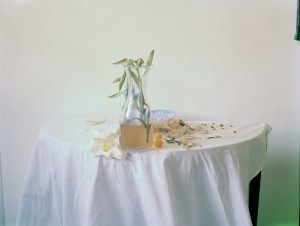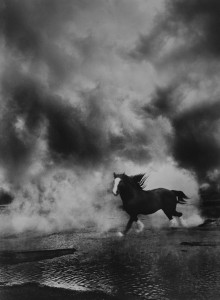
To a certain extent, all fine art photographers follow Minor White’s dictum to capture the subjects of their work “not only for what they are, but what else they are.” Indeed, if the difference between a fine art photograph and a pure documentary photograph could be boiled down to just one thing, that one thing might be that the fine art photograph, unlike its pure documentary brethren, asks us, the viewers, to ‘see’—in our mind and with our emotions—something besides the obvious in its image. In an important way, the measure of a fine art photograph is the extent to which the image moves us to consider, if not feel, the ‘what else’.
To a certain extent, all fine art photographers manipulate ‘reality’ in order to create an image that conveys more than the obvious. Even the disciples of ‘straight’ photography manipulate reality, if only by choice of film, framing, perspective, filters, aperture, shutter speed, development, paper, cropping, dodging, burning, etc., etc., etc. In an important way, manipulation of reality is the means by which the fine art photographer creates the ‘what else’.
Two exhibits, one at the Denver Art Museum, and one at the nearby by Byers-Evans House Museum, offer the works of two fine art photographers who employ very different modes of manipulation, and in my view, evoke two very different reactions. Both exhibits moved me, one in a manner likely anticipated by the artist, the other, likely not.
At the DAM (through March 24, 2013) in the Photography Gallery is Laura Letinsky – Still Life Photographs 1997-2012. At Byers-Evans (through February 23, 2013) is Out West – Recent works of Loretta Young-Gautier.
Laura Letinsky is an artist best known for her still life photography. Her compositions are spare, generally featuring an arrangement of a relatively few odds bits—a plate, a spoon, some half-eaten fruit. Her work is in color, but her use of color is spare as well; she generally limits her color palette to fine variations of white and a few pastels. Viewing Letinsky’s work inevitably evokes melancholy feelings. There is something sad about the lonely odds and ends, the bits of leftover food, the items left behind when the party has moved off to another stage. Letinsky is asking us to consider something about how we live, how we consume, perhaps how we waste. While some may wish she did not pose such questions, it is hard not to be moved to the sadness by her images. Even those who refuse to consider the questions her work poses still must admire the craft she employs in asking, because above all else Letinsky employs beauty to hook us. And only when so captured will we consider ‘what else’ is there to be seen, what else do we feel.

Where Letinsky tries to manipulate viewers’ reaction to her images by the arrangements she creates and the color and lighting she controls, Denver-area artist Loretta Young-Gautier manipulations are of a different order. In Out West, Young-Gautier sometimes combines as many as ten different negatives to create a single, typically stunning, image. Her craftsmanship is impeccable, the combinations are seamless. Out West is meant to stir fond cultural memories of the old west, and therein lays the problem I have with this exhibit. The images are beautiful. So why is my reaction to this exhibit negative?
It is because Young-Gautier is portraying a west that doesn’t exist anymore, if it ever existed at all. If her images evoke warm feelings it is not so much due to cultural memories of how the west actually was, but rather due to we Americans having been culturally programmed to think that is the way the west was, and indeed still may be (think Marlboro ads and truck commercials). Such warm feelings are just false emotion. Young-Gautier might as well employ her magic to concoct a faux Ansel Adams landscape. The real western landscape is not Ansel Adams, it’s Robert Adams. And the real scenes ‘out west’ are nothing like the heroic scenes portrayed by Young-Gautier. So while I admire the craft and beauty of the Out West images, I could not help but reject the feelings they were meant to stir.